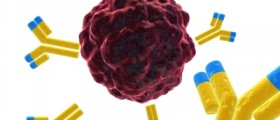
Colon cancer
One of the most serious conditions that can affect any organ in the human body is cancer. When the cells start to grow abnormally within the colon, they form a tumor. Colon cancer is a malignant tumor and has five different stages. The person who develops colon cancer receives the treatment according to the stage of the cancer. To determine in which stage the cancer is, there are several tests that are done, such as CT scan, lymph node biopsy, complete blood count and carcinoembryonic antigen assay, as well as magnetic resonance imaging, chest x-rays and position emission tomography scan.
Stages of the colon cancer
There are five stages of the colon cancer and they include: stage 0, stage 1, stage II, stage III and stage IV.
Stage 0 is also named carcinoma in situ and is marked by the appearance of the abnormal cells in the mucosa of the colon cancer. The mucosa is the innermost layer of the colon.
The cancer from the mucosa is in the stage 1, spread to the layer of the tissue under the mucosa, which is called sub mucosa. In this stage, the tumor may expand even to the muscle layer of the colon wall.
Stage II has three sub-stages.
In the stage II A, the tumor expands from the muscle layer of the colon wall to the outermost layer of the colon wall, which is called serosa.In the stage II B, the serosa is completely invaded by the cancer, but the tumor is not spread further, while in the stage II C the cancer from the serosa spreads to the adjacent organs.The stage III has also three sub-stages.
In the stage III A, the tumor invades the mucosa, sub mucosa and the muscle layer of the colon wall and only three lymph nodes. On the other hand, in this sub-stage, the cancer may also invade the mucosa, sub mucosa and only 4 to 6 adjacent lymph nodes.In the stage III B, the tumor invades the muscle layer of the colon and complete serosa, as well as one to three lymph nodes, or the tumor invades the muscle layer of the colon wall with four to six lymph nodes, or the tumor invades the mucosa, the sub mucosa and at least seven lymph nodes.In the stage III C, the cancer affects serosa and four to six lymph nodes; the muscle layer of the colon, serosa and at least seven adjacent lymph nodes; or the tumor invades the serosa, nearby organs and at least one lymph node.In the stage IV A, the tumor spreads through the colon wall and invades one organ that is not near the colon, the liver, for example, while in stage IV B, the cancer spreads to more than one organ that is not near the colon.

















Your thoughts on this
Loading...